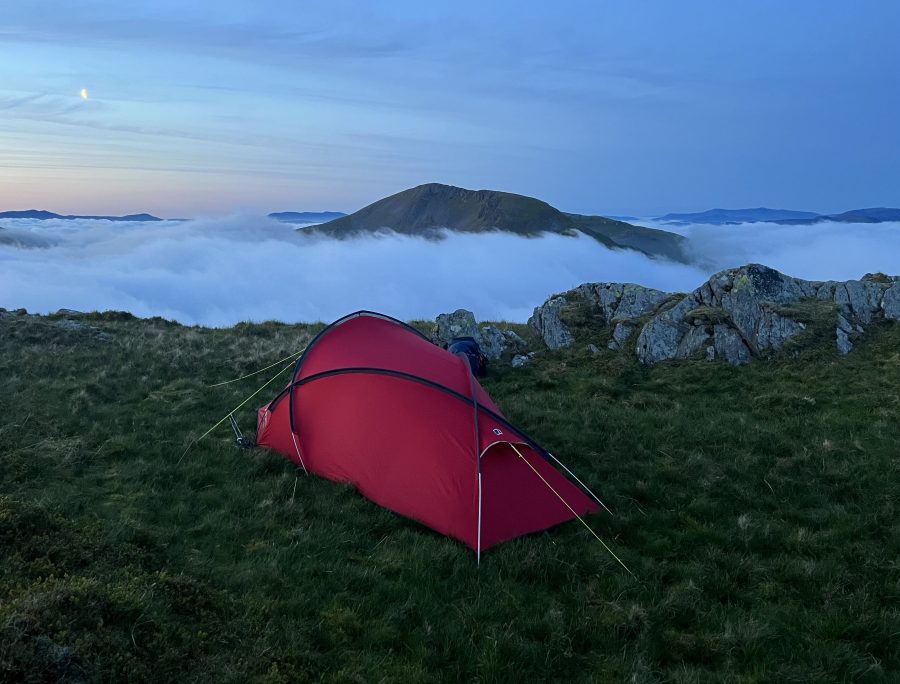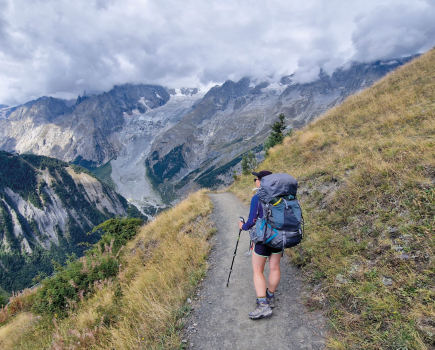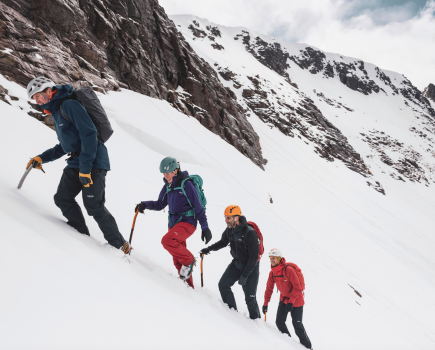The Great Outdoors spoke to Director of Training for Wilderness Scotland, Associate Instructor at Glenmore Lodge and Leave no Trace Master Educator Myles Farnbank to get a few tips on how backpackers and wild campers can ensure they leave the land as close as possible to how they found it.
Main image: An early morning cloud inversion on Cnicht. | Credit: Francesca Donovan
These ‘leave no trace’ principles are held dear by any responsible wild camper and outdoors enthusiast.
The 7 principles of Leave No Trace: in brief
- Plan ahead and prepare
- Travel and camp on durable ground
- Dispose of waste properly
- Leave what you find
- Minimise the effects of fire
- Respect farm animals and wildlife
- Be considerate of others
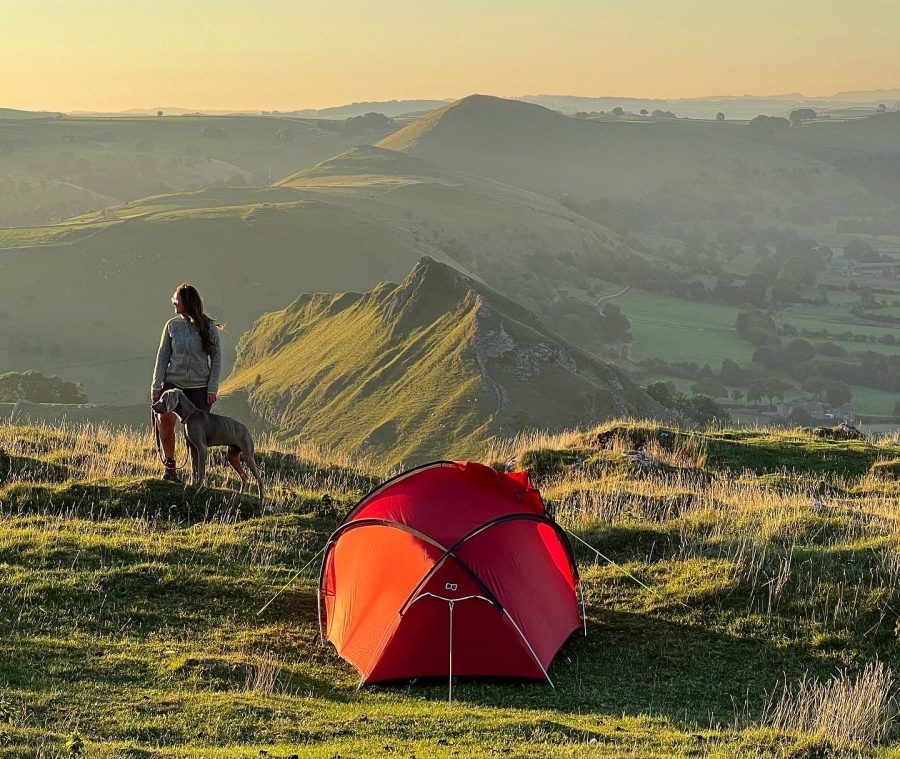
A summertime wild camp on Chrome Hill in the Peak District. Credit: Francesca Donovan
Now, for the details on how to put these principles into practice when you’re enjoying the great outdoors.
Choose your spot carefully
“If your chosen camp site is already heavily impacted by previous visitors, keep your tent within the impacted area. Further from the beaten track where there is no sign of people having camped in the location previously, spread your tents out to reduce the impact from group camping, and choose a site with durable ground cover (bare rock, sand or dry grass) for your communal area.
The areas that are most sensitive are those between the two. If you find a place that is just starting to show signs of impact, then it is likely to recover into a pristine situation if left fallow – so camp elsewhere.”
Calls of nature
“Urine is relatively innocuous and unless there is a lot if it concentrated in a relatively small space then it doesn’t have a particularly negative impact. But going for a ‘number two’ can have a significantly damaging impact on both health and water quality. Move well away from your camp site and at least 50m from any permanent bodies of water. The leave no trace guidance is 75m away, which is a considerable distance.
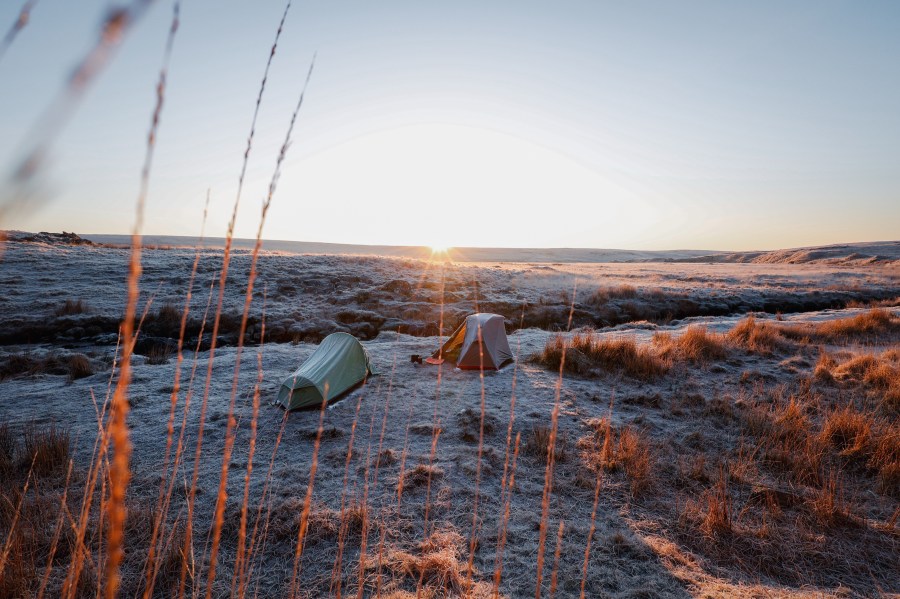
The sun rises over a perfect Dartmoor wild camp. Credit: David Guest
Some organisations recommend as little as 30m distance from fresh water, which is fine if done properly using a cathole but 50m is a safer distance. A cathole needs to be at least 15-20cm wide and 15-20cm deep, to avoid attracting flies and other animals and to ensure the waste is deep in the humus area of the soil.”
Toilet paper
“Toilet paper is made up of very short wood fibre in order to break down in our sewage system. Buy unscented, unbleached, recycled toilet paper as it breaks down more quickly. The higher you go up the mountain, the poorer bacterially the soils are so waste takes longer to break down
But do not burn toilet paper. It doesn’t burn easily once used and there have been some significant wildfires caused by people trying to set fire to toilet paper, including one in Scotland a few years ago. Wet wipes should never be left in catholes. They contain chemicals and plastic and won’t break down quickly at all. If you use them, bring a container to take them away afterwards.”
Plan your meals
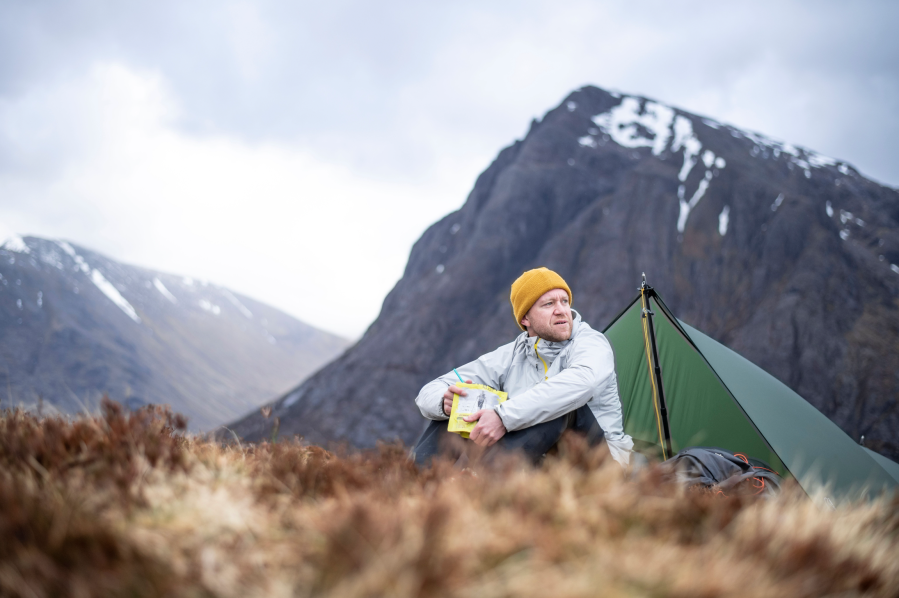
A West Highland Way wild camp on Beinn a’Chrulaiste. Credit: James Roddie
“It’s important to cook the right amount of food and to be vigilant to ensure it doesn’t burn. If you have burnt or leftover food, you’ve then got a problem of disposal and burying it is not appropriate because that then attracts animals. It won’t do them any good and it will start to habituate animals to the camp site if it’s a popular spot. Cook some food, feed everybody and then if people are still hungry, cook more.”
Washing up
“Take a water bladder to the river or loch, fill it up, bring it to your camp area and do your washing away from the water source. Put a bit of water in the pot then scrape it out with your finger, a stick or spoon. Then take a cotton hanky and put it over the pot. Find an area where there’s plenty of vegetation and then walk. As you’re walking, turn the pot upside down. The water will come through the hanky and all the food particles will get caught within it.
Ensure that the smelly water is spread over as big an area as possible. The bits of food can then be scraped off the hanky into a waste bag or plastic container and the hanky can be hung outside a rucksack to dry. If your pot is still greasy, use a very small amount of biodegradable washing-up liquid, such as Ecover, which is plant-based. Pour it into your pot with a little bit more water, wipe it around, and then move away from camp, find an area with lots of vegetation and then do a big vigorous side-to-side swoosh to spread out all the water.”
Washing yourself
“People shouldn’t be taking perfumed soaps into the outdoors; the chemicals are quite strong. Use something biodegradable instead. You can now buy folding camp bowls. Stand in one of those and hang a water bladder with a shower attachment from a tree. You can have a shower standing in the bowl using as little as a couple of litres of water.
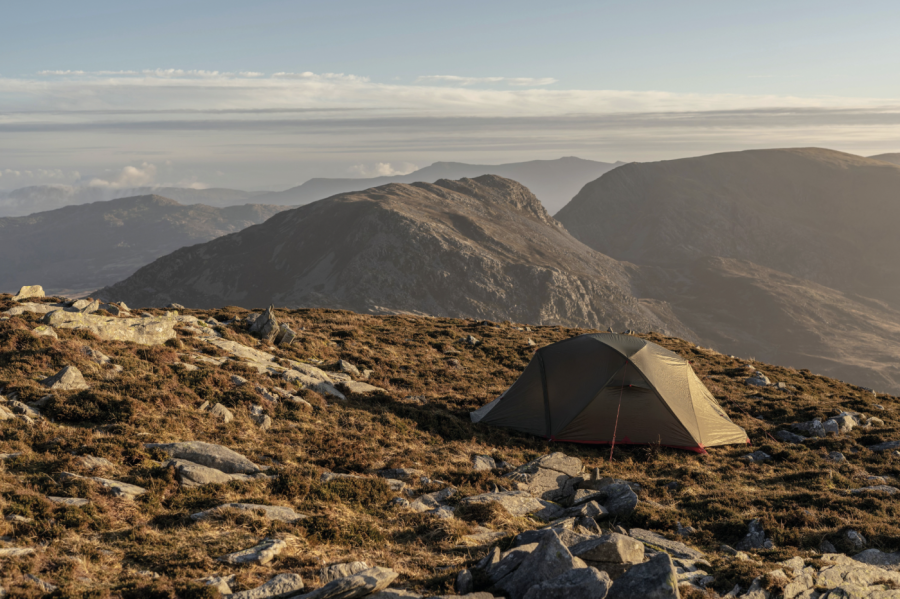
Wild camping in the Rhinogydd on the Cambrian Way. Credit: Shutterstock
All of the soapy water is caught in the bowl and afterwards you can dilute it with a bit more cold water and then do the same centrifugal “swoosh” as you did with washing-up water – just walk and throw it as vigorously as you can and spread it over a big area. Then you’ve not concentrated any of the soaps and oils from your body in one spot.”
Brushing your teeth
“You can get toothpastes made of natural materials. But the thing to do is just use enough and no more. If you have a mug or other container, rather than spit out, spit into the mug that’s full of water. Then spread the diluted spit over as big an area as you can. When it rains, it will wash away effectively.”
Plan ahead
“Think about where you’re going, where you’re planning to camp, what impact you might have, and plan accordingly. So think about what has the weather been like for the preceding week – is the ground going to be very soft? Have you got a little trowel for a cathole, a water bladder and a hanky? If you think about leave no trace at the planning stage, you’re likely to reduce your impacts significantly.”
This article was originally published in August 2016. Myles Farnbank is Director of Training for Wilderness Scotland, an Associate Instructor at Glenmore Lodge and a Master Educator in the principles of Leave no Trace.
Read more: Changing the name of wild camping won’t stop bad behaviour

